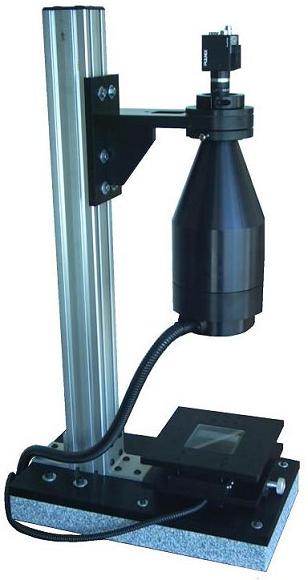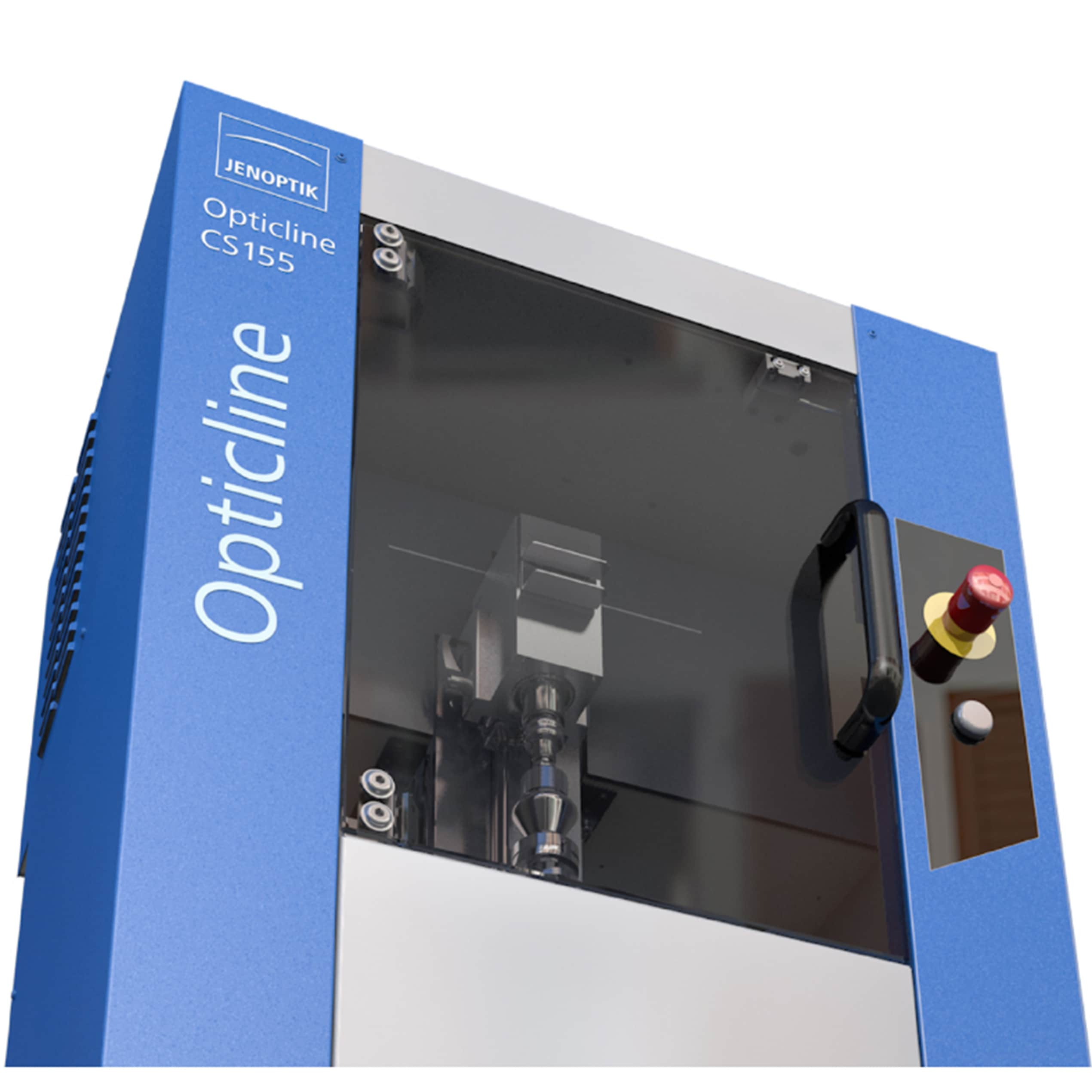The comprehensive guide to using optical measurement systems for contactless product inspection
The comprehensive guide to using optical measurement systems for contactless product inspection
Blog Article
Comprehending How Optical Measurement Solution Enhance Quality Assurance Processes
When you're looking to enhance quality control processes, comprehending optical measurement systems is crucial. Let's explore the key aspects that make optical measurement a game-changer in quality management.

The Fundamentals of Optical Dimension Solutions
Optical dimension systems play an important function in guaranteeing item top quality throughout different markets. These systems utilize light-based modern technologies to collect specific information about physical qualities, such as measurements, surface finish, and color. By using video cameras, lasers, and sensors, you can attain non-contact dimensions that reduce the risk of destructive delicate items.
Understanding the basics of these systems is fundamental for reliable high quality control. They operate concepts like diffraction, representation, and refraction, enabling you to evaluate numerous materials and forms. The accuracy and speed of optical dimensions make it possible for real-time surveillance, which assists you identify issues early in the production procedure.
Additionally, these systems can be integrated with software program for enhanced data evaluation, producing a comprehensive high quality management strategy. By leveraging optical measurement systems, you not only enhance productivity yet also ensure your items fulfill stringent quality standards, eventually enhancing consumer fulfillment.
Sorts Of Optical Dimension Technologies
Countless types of optical measurement modern technologies are offered, each developed to satisfy details requirements in high quality control. You could encounter laser triangulation, which measures distance by examining the angle of a mirrored laser light beam. This technology is optimal for recording specific dimensions in 3D space.
Another option is structured light, where you forecast a collection of light patterns onto a surface to produce a thorough 3D version. This method works well for complex geometries.
Then there's interferometry, which can spot minute modifications in surface profiles by evaluating the interference patterns of light waves. This is particularly beneficial for applications needing nanometer precision.
You may also consider optical coherence tomography, which provides high-resolution photos of inner attributes without harming the object. Each innovation serves various requirements, so choosing the best one is vital for accomplishing highest quality control results.
Key Advantages of Optical Dimension in High Quality Control
When it pertains to high quality control, leveraging optical measurement technologies can significantly enhance precision and effectiveness. These systems allow you to catch thorough dimensions swiftly, decreasing the time needed for examinations. You'll see that optical measurements can determine even the tiniest problems that might go undetected with conventional methods, making certain product consistency.
Furthermore, using optical dimension systems commonly results in reduced waste and revamp, as you catch concerns early in the production procedure. You'll likewise value the non-contact nature of lots of optical methods, which decreases damage to delicate components throughout assessment. This versatility enables for a more comprehensive range of applications throughout different materials.
With real-time information collection, you can make enlightened decisions quickly, streamlining your top quality assurance procedures (optical measurement system). Inevitably, including optical measurement into your top quality control method not just boosts efficiency but likewise boosts consumer complete satisfaction by supplying higher-quality items consistently
How Optical Dimension Solution Improve Precision and Accuracy
Optical dimension systems boost accuracy and precision by improving dimension resolution, enabling you to identify even the smallest variants. With real-time data analysis, you can make instant changes and choices, ensuring your procedures remain on track. This combination not just enhances item high quality however likewise simplifies your quality assurance initiatives.
Enhanced Dimension Resolution
By leveraging innovative modern technologies, optical dimension systems significantly enhance dimension resolution, leading to improved precision and precision in quality control. You'll see a considerable difference in the quality of dimensions, enabling you to recognize also the tiniest discrepancies from requirements. Eventually, enhanced measurement resolution not just boosts item quality however also enhances source usage, making certain that you meet consumer assumptions regularly.
Real-Time Information Analysis
Although standard dimension systems commonly count on delayed data handling, real-time data analysis in optical dimension systems changes the method you keep an eye on quality. By supplying prompt feedback, these systems enable you to discover inconsistencies and inconsistencies as they happen, permitting for swift corrective actions. You'll experience enhanced precision given that you can quickly contrast dimensions versus predefined criteria. This removes guesswork and reduces the risk of problems sliding through. In addition, real-time information aids you accumulate valuable understandings with time, adjust your quality assurance procedures. With this advanced innovation, you'll improve both accuracy and effectiveness, making certain that your items consistently fulfill high standards. Welcome real-time evaluation, and see your quality assurance initiatives rise to brand-new heights.
Incorporating Optical Dimension Into Existing Quality Assurance Processes
Integrating optical dimension right into your existing quality control procedures can significantly boost accuracy and efficiency. By including optical measurement systems, you can simplify information collection, minimizing human error while enhancing the rate of assessments. Start by recognizing crucial points in your assembly line where optical dimensions will give the most worth.
Next, educate your team on the new technology, guaranteeing they comprehend just how to utilize the systems efficiently. This training will certainly help them interpret results swiftly and properly.
You ought to additionally establish a procedure for integrating optical data right into your existing top quality management software program. This integration enables real-time analytics and coverage, enhancing decision-making.
Regularly evaluate the data and comments from your team to identify any type of locations for renovation. With these steps, you'll not just boost your high quality control procedures but also promote a society of constant improvement within your organization.
Case Studies: Successful Application of Optical Dimension Equipments
In this section, you'll check out exactly how optical dimension systems have actually transformed quality assurance in markets such as aerospace and auto production - optical measurement system. You'll see real-world instances of exactly how these modern technologies boosted precision and efficiency. These case researches highlight the concrete advantages of incorporating optical systems right into production procedures
Aerospace Sector Applications
As the aerospace market encounters enhancing needs for accuracy and click here for info effectiveness, firms are turning to optical dimension systems to enhance their high quality control procedures. A leading aircraft maker incorporated optical measurement modern technology to examine turbine blades, minimizing examination time by 50% while enhancing accuracy.
Automotive Production Success
Optical dimension systems have also made substantial strides in the automobile production field, where precision is essential to vehicle performance and safety. BMW incorporated optical measurement for body assembly, ensuring parts fit completely, which decreased rework and enhanced manufacturing efficiency. These instance studies show how optical dimension systems equip you to accomplish tighter resistances, reduce waste, and elevate total product top quality.
Future Patterns in Optical Dimension and Quality Control
While developments in modern technology remain to reshape the manufacturing landscape, the future of optical measurement and top quality control looks promising - optical measurement system. You'll see a considerable change in the direction of automation and AI integration, allowing systems to analyze data in real-time. This implies quicker decision-making and lowered human error, ultimately improving product top quality
Furthermore, as 3D imaging innovation enhances, you'll take advantage of even more exact dimensions of intricate geometries, making it much easier to maintain limited tolerances. The increase of cloud-based options will certainly likewise allow you to accessibility data from another location, facilitating partnership and enhancing procedures.
Additionally, sustainability will play a vital function in future growths. Anticipate optical dimension systems to concentrate on power efficiency and waste decrease, lining up with global environmental goals. By embracing these trends, you can assure your top quality control procedures stay innovative, aiding your company flourish in a significantly open market.
Regularly Asked Concerns
What Industries Benefit Many From Optical Measurement Systems?
You'll locate sectors such as manufacturing, aerospace, and automobile advantage most from optical dimension systems. These fields depend on accurate dimensions for quality guarantee, guaranteeing products satisfy stringent requirements and boosting general operational efficiency.
How Do I Pick the Right Optical Dimension System?
To choose the best optical dimension system, examine your particular needs, consider the kind of measurements you require, examine the system's accuracy, and guarantee it fits your spending plan and operational needs.
What Are Typical Obstacles in Applying Optical Measurement Equipments?
You'll deal with obstacles like assimilation with existing systems, making certain accurate calibration, training team properly, and managing expenses. Recognizing these difficulties early assists you create techniques to conquer them and effectively apply optical measurement systems.

Exist Training Resources Available for Optical Dimension Technologies?
Yes, there're different training sources readily available for optical dimension modern technologies. You can locate on-line courses, webinars, and workshops supplied by market experts or organizations. These resources can assist you properly apply and make use of these advanced systems.
How Do Optical Measurement Systems Compare to Conventional Measurement Techniques?
Optical measurement systems provide higher precision and speed contrasted to traditional techniques. They minimize human mistake, make it possible for non-contact dimensions, and give real-time information analysis, making them a lot more reliable for different applications in high quality control.
Conclusion

Optical dimension systems boost accuracy and accuracy by boosting dimension resolution, permitting you to discover also the tiniest variations.By leveraging innovative modern technologies, optical measurement systems significantly boost measurement resolution, leading to enhanced accuracy and precision in quality control.Although conventional dimension systems often rely on delayed data processing, real-time data evaluation in optical dimension systems changes the means you check top quality.As the aerospace industry faces increasing demands for precision and effectiveness, business are turning to optical measurement systems to enhance their quality control processes. How Do reference Optical Measurement Systems Compare to Traditional Dimension Techniques?
Report this page